A-Z Putting (H): Hosel
Published: Last updated:
Hosels: Find out how that shaft-head join affects performance
There’s almost as many different hosel designs nowadays as there are putters. Each offers not only a rent look, but alters toe hang and gives varying amounts of off set. Here, we use TaylorMade’s comprehensive line-up of flatsticks to showcase the most common hosel set-ups you’ll find on a putter rack, and explain how they can influence your performance on the greens.
Centre Shaft
Some golfers say centre shaft hosels (which means the shaft joins the head in the middle of the head) are the simplest way to putt. They’re really easy to align, and because the shaft joins the head right where you want to hit putts you simply use a pendulum motion to stroke putts into the hole. They usually suit golfers with very little opening or closing in their stroke.
Double Bend
The traditional shaft/hosel set up for mallets. Like single bends it’s the shaft that’s bent, not the hosel. The double bend sets the putter’s head behind the hands and helps designers with face balancing, which usually means double-bend models suit straighter strokes. The choice between double and single bends comes down to cosmetics more than performance.

‘L’ Neck
The most used hosel for blade putters over the years; literally hundreds of thousands of different models have been produced with this style of hosel. Most L necks have a degree of toe hang, meaning this style of putter is more suited to varying degrees of arcing stroke.
 Small Curve
Small Curve
A very traditional and much loved hosel set-up which lets the eye ow seamlessly from shaft to head. Small curve hosels usually mean plenty of toe hang, which traditionally means they work best in the hands of strong arc putting strokes. Some of the very best putters over the years have used this style of flatstick.

Single Bend
Single bend hosels are a pretty modern addition to putters. It’s actually the shaft that’s bent not the hosel. The bend puts the putter head behind the hands (so it’s off set), and the advantage over double bend models is a cleaner appearance, which is less prone to drawing the eye. Good for straight-back- and-through strokes.

Small Slant
This hosel’s been key in tour pros switching from blades to mallet and MOI models. It allows mallet and MOI style putters to have toe hang (traditionally they’ve been face balanced), opening up more forgiving putters to arcing strokes. Different designs offer varying toe hang and off set.

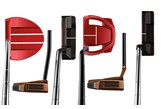
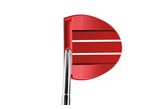
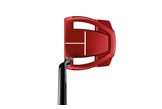
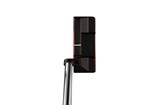
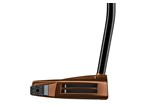
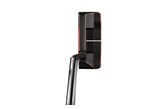
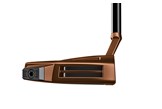

 Small Curve
Small Curve